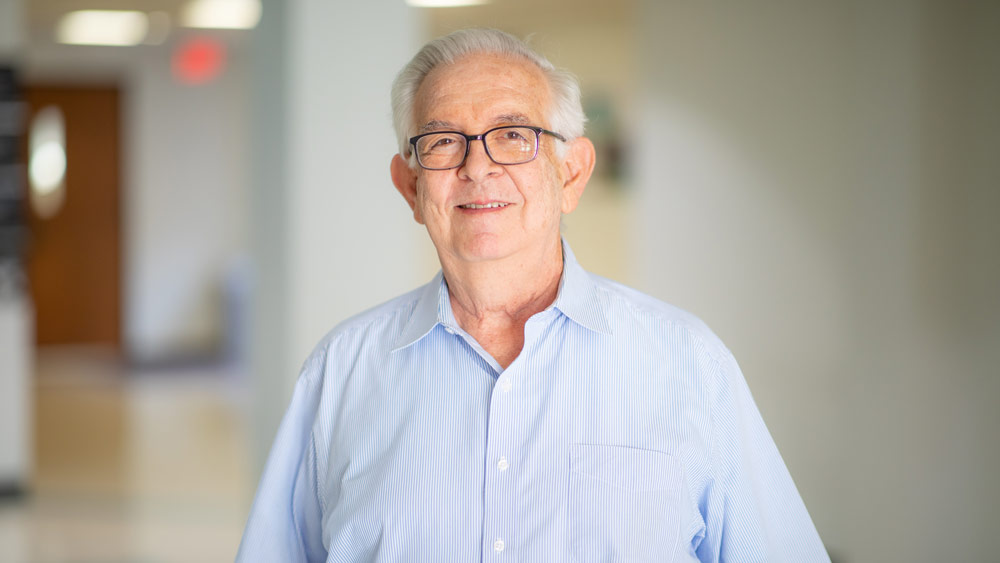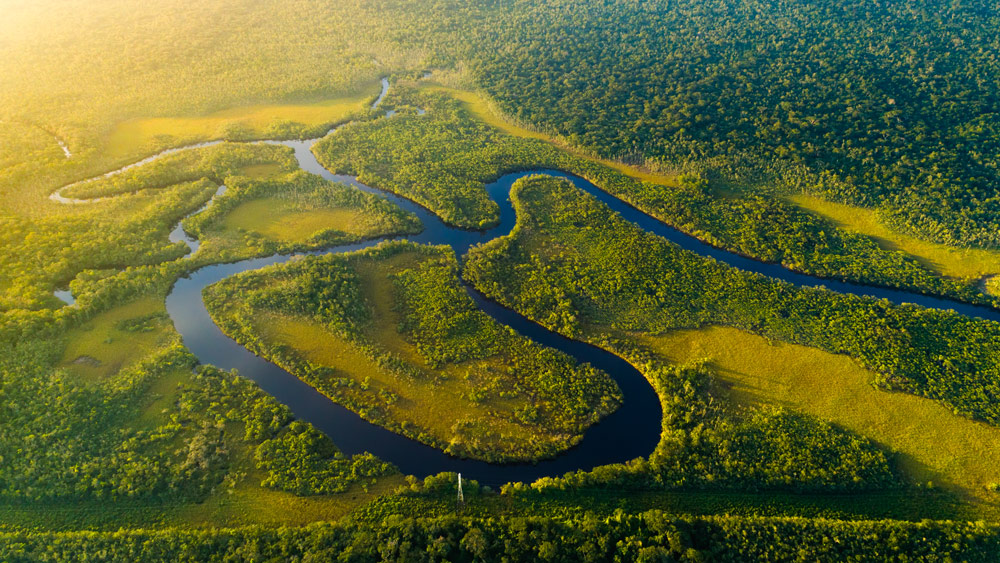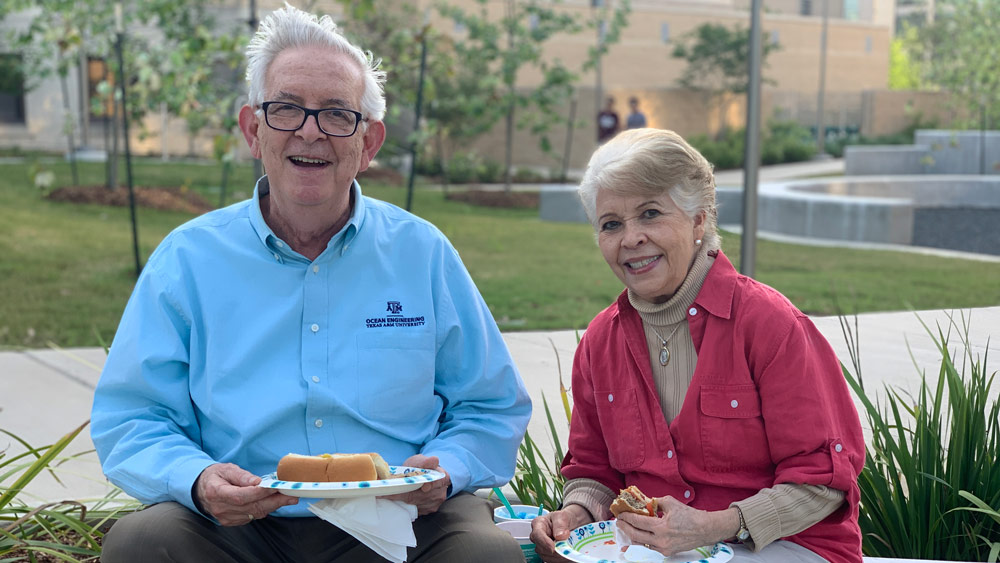
What would someone with an engineering and science career spanning over 50 years say to students just beginning their engineering journeys?
“Have fun.”
From the very beginning, Dr. Ignacio Rodriguez-Iturbe knew he was not drawn to the structural side of science and engineering. He strove to understand the world around him and ask questions that had no answer, while always staying curious and having fun with his work.
Rodriguez-Iturbe is a member of the National Academy of Sciences, the National Academy of Engineering, the American Academy of Arts and Sciences, and the Vatican Academy of Sciences. He is a TEES Eminent Professor and Distinguished Professor in the Department of Ocean Engineering at Texas A&M University.
Finding his flow
While Rodriguez-Iturbe’s initial interest and focus was in hydrology, his path has flowed through many areas. His intrigue and curiosity led him to study hydraulics and hydrology for his master’s and doctoral degrees – diving into how nature worked in relation to water. What followed was a passion that spanned both decades and various topographies on its way to coastal processes and ocean engineering.
If I have to define my interest, it really is the interaction between nature and engineering, nature and man. How does nature work? Can we understand how nature works, mathematically? How can we work with nature in order to do the things we haven’t?
Starting with hydrologic processes in river basins, Rodriguez-Iturbe followed his curiosity as he asked how the structure of natural drainage networks and river networks controlled hydrologic processes, such as those associated with the water cycle.

Working alongside Dr. Andrea Rinaldo, a Hagler Fellow and professor at École Polytechnique Fédérale de Lausanne in Switzerland, he published their pioneering research in a book titled “Fractal River Basins: Chance and Self-Organization.” Their work stands as a foundation for probability models (a mathematical representation of a random phenomenon) of rainfall and the structure of the drainage network, the development of solutions for environmental problems related to species diversity and river conservation methods.
Continuing his research on probability modeling and the interface between environments and the water cycle, his focus shifted to another important ecosystem, savanna geomorphology and vegetation. With a topography that is very different from wetlands and coastal areas in that it doesn’t undergo dramatic change, savanna vegetation is largely driven by soil moisture.
Combining his hydraulic knowledge with this new ecosystem, Rodriguez-Iturbe wondered how vegetation (in the case of his research, grass and trees) cope with unpredictable rainfall from a hydrology point of view to better understand how, in turn, these plants impact the water cycle through their coping methods.
Uncharted (and unpredictable) waters
Upon an invitation to return to Texas A&M after visiting years prior, Rodriguez-Iturbe finally found himself at the coast and wading into ocean engineering.
As he explained, with nearly half of the world’s population living within 100 kilometers of a coastline, the need to understand coastal processes on a fundamental level and the nature therein is paramount.
“I always say that what drives my research is the want to know how nature works,” he said. “What is the relationship between vegetation, the coastal geomorphology of dune fields, and the marine environment, specifically waves and wind.”
Unlike savannas, which do not change much over time, the coast is constantly evolving due to wind and waves. What makes studying coastal topography even more challenging is that its topography as well as its drivers, the waves and wind, are all stochastic – meaning that they cannot be researched in deterministic terms, only looked at in terms of probabilistic modeling.

An additional challenge, as Rodriguez-Iturbe explained, is that high water events – including normal tide and wave events and extreme events such as hurricanes – flatten the coastal line, thus affecting the vegetation and dune fields. All of which are also random.
“Dunes are extremely important because on top of them and behind them, you have vegetation of different types,” he said. “Dunes are also the first line of defense against water events and they, themselves, have vegetation that depends on the topography of the dune field, which is constantly changing. So, one of the first questions the coastal people in the department had was what is the mathematical framework to establish dune height change along the coastline? How do dunes change over time and space? What is the probability distribution and the probabilistic structure of the dune height at a single point?”
The answer to these questions is a fundamental understanding of how coasts naturally evolve and change around the world. That insight is vital for the protection and preservation of coasts for all those living near enough to one to be affected by larger water phenomena, such as hurricanes and tsunamis.
And while he doesn’t have all the answers to these questions, Rodriguez-Iturbe and his collaborators are making strides toward being able to mathematically understand, formulate and model such probabilities. By simplifying the problem and focusing first and foremost on the wave input, he and his team are carving the first stepping stone to a groundbreaking understanding of the stochastic fundamentals of coastal processes. They currently have submitted two papers on this subject to the Proceedings of the National Academy of Science.
Navigating new horizons
In addition to his world-renown research, Rodriguez-Iturbe has a passion for education and teaching the next generation of inquisitive leaders seeking to understand and better the world.

“I love to tell my students – especially undergrads – that when you go for a walk just think about what you see,” he said. “Why do the trees you see have branches? The lungs have branches. Rivers have branches. Why is that natural architecture something that is so common in nature? Look at the world like a child and ask those questions. Explore them.”
As Rodriguez-Iturbe described, his interest in finding patterns in the natural world has led him down many paths of research as he has kept his eyes and mind wide open – curious how the geometry of the world impacts the way things are and how they can be implemented in other aspects of life, such as engineering.
And, above all else, what does he have to say to those just beginning their academic and professional careers? How does someone keep their passion and excitement for their work for over half a century?
“Have fun,” said Rodriguez-Iturbe. “What is beautiful about investing in research is that the search is many times more exciting than the result – the evolution and how you get there. Like mountain climbers, we are guided by our destination, but should never forget to enjoy the climb and the journey there. In research, you can be working for many hours on a single project. And sometimes you will be upset or frustrated or not get the result you want. That happens to all of us. So, my advice is to make sure you enjoy what you do. Enjoy the climb. Because when you care, other people will care, too. And that’s something to be excited about.”